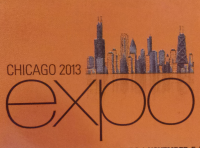The annual FIA Expo event is in Chicago this week. Officially it is a two-day event, commencing with a dinner on Tuesday, and running through Thursday. Days 1 and 2 refer to Wednesday and Thursday, so I suppose today (Tuesday Nov 5) is day 0?
The FIA took the liberty of organizing an IT SEF showcase on Tuesday, given that the relevant industry professionals are all in town for the main event. The panel was chaired by Greg Wood of Deutsche Bank and had the following panelists:
The Panel
Peter Barsoom, ICE
James Cawley, Javelin
George Hamilton, Bloomberg
Sunil Hirani, trueEx
Leonard Nuara, Tera Exchange
Grigorios Reppas, MarketAxess
Vikas Srivastava, Integral
Jon Williams, Tradeweb
Intro
Firms introduced themselves, gave brief background and small pitch on their services.
Topic 1: October 2nd
Greg posed the question to the panel about how October 2nd went. General agreement was that it was a non-event. Jon said they have been building the technology for the best part of 3 years, so the technology was there. Leonard furthered this sentiment by stating that the real struggle was for clients, having to onboard to one or more SEFs. Vikas, representing the only pure FX play on the panel referred to footnote 88, and the impact that has had for the many-to-many portals to suddenly register as SEF’s, as well as for the FX clients that had thought SEF’s would not impact them given the lack of the clearing mandate in FX.
If you’ve been following my blog, you’re probably aware that I have been analyzing the volumes that SEF’s have done since October 2. I’ve often wondered, amidst the rhetoric about trading going offshore, clients not getting onboarded, and clients simply holding off, what this meant to some of the incumbent platforms. George addressed this by stating that a typical business day before October 2nd was 120bn, and October 2nd was a mere 5bn!
Topic 2: MAT (Made Available for Trading designation)
Greg had the panel define MAT. Jamie went first (as he did in applying for MAT!) and described the process and what that means – once approved, the MAT products would be “required” transactions that the market would have to trade through a SEF (with exceptions for block trading).
The two sides of the debate were represented – on one side Jamie kept the mantra that the whole curve is liquid and tradable, and the counterargument was voiced by Leonard that 75% of the market is in standard contracts and hence the MAT contracts should be limited to these. The panel mentioned the possible repercussions of making “everything” MAT, particularly the confusion around executing structures that require some on, some off SEF.
Topic 3: Standardization
Greg asked if the swaps market will become more standardized and trade more like equities, and if that meant people will start trading on CLOB. Peter made the CDX analogy, which was once a highly bespoke market that now trades standard coupons with 85% of activity in on-the-run products that could be easily traded on an order book.
The general sentiment (which I share) is that the rates market in particular is too bespoke to trade on an order book and hence lends itself to an RFQ or phone model. However Sunil made a very good analogy which made me think twice. He referred to Blockbuster Video (who owned 95% of the video rental market) and if you were to analyze their business model 10 years ago, nobody consumed video through the internet or on a phone, so it might be easy to expect this to continue. People consumed videos by driving to a Blockbuster and walking around the store. The internet revolution that caused their downfall might be analogous to the regulation revolution that we are now witnessing. After all, there are firms that, if there is a market and volumes, would readily provide liquidity into an order book of swaps.
Topic 4: Crystal Ball
Greg posed that regulation is finally taking hold. Hence this time next year, the FIA IT panel might have something else to talk about – what would that be?
I was a bit surprised with the positive tone of the question as well as the answers. Call me a pessimist, but I think there are unintended consequences to be worked out for years to come. However the panel were across-the-board optimistic, saying we may have achieved the original G20 vision of transparency and reduced systemic risk, and that next year we’ll be talking about things like more products, and “good” consequences such as spread compression.
An audience member asked how many SEF’s there will be 1 year from now. Numbers ranging from 1 (sarcastically) to 3 per asset class were thrown around. I’m in that same camp. I believe that given the utility nature of SEF’s and the operational overhead of connecting to large amounts of them, the industry will be better served by a fairly limited number of them.
However Vikas explained that Integral software alone runs close to 200 markets around the globe. I do believe however that regional FX markets, particularly not the many-to-many variety, can exist in large numbers. But he might be onto something.
Until tomorrow
So that is day 0. Looking forward to the next couple days.
FIA Chicago Expo BLOG SERIES:
Day 0: https://www.clarusft.com/fia-chicago-expo-day-0/

